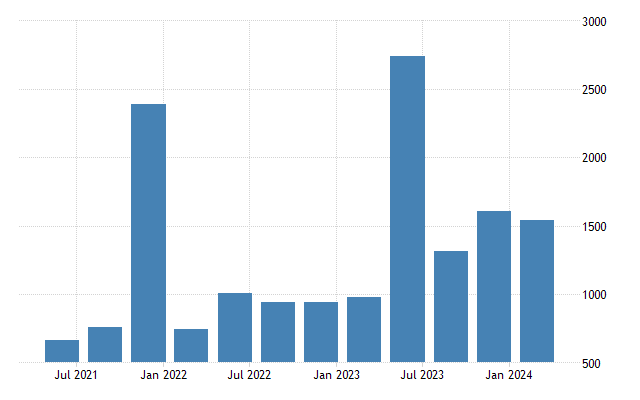
Guyana’s main imported goods
Guyana’s main imported goods cover a broad range of sectors that reflect the country’s developing economy and specific needs within industries such as oil, mining, agriculture, and manufacturing. Located in northeastern South America, Guyana has seen an increase in its imports, especially with its recent economic growth spurred by the discovery of offshore oil reserves. The country relies on imports to support its growing population, development projects, and industrial activities. Key imported goods for Guyana include machinery, transport equipment, refined petroleum, food products, chemicals, and manufactured goods.
1. Machinery and Transport Equipment
One of the most critical categories in Guyana’s imports is machinery and transport equipment. These include a variety of heavy-duty machinery, industrial equipment, and vehicles essential for the country’s infrastructure projects, mining, and the oil and gas sector. The significant growth in the oil industry has increased the demand for specialized machinery, such as drilling rigs, compressors, and construction machinery for building infrastructure. Transport equipment like trucks, ships, and other vehicles used to transport goods and raw materials is also crucial to support these expanding sectors. The machinery and transport equipment category makes up a considerable portion of Guyana’s imports, enabling essential industrial and infrastructural activities.
2. Refined Petroleum
Despite being an oil-rich country, Guyana still imports large quantities of refined petroleum products, including gasoline, diesel, and aviation fuel. This is mainly due to the fact that the country lacks significant refining capabilities. Refined petroleum products are essential for Guyana’s transportation sector, electricity generation, and industrial activities. As Guyana’s economy grows, especially with the expanding oil sector, the demand for refined petroleum has also increased. The country’s energy consumption needs in residential, commercial, and industrial sectors rely heavily on imports of refined petroleum products.
3. Food Products
Guyana also relies on a significant portion of imported food products to supplement local production. These imports include processed foods, grains, dairy products, meat, and beverages. The agricultural sector in Guyana is substantial, with local production of rice, sugar, and other staples, yet the population depends on imported goods to satisfy the demand for a diverse range of foods. With changing consumer preferences, imports of packaged and processed foods, as well as beverages and dairy products, have grown. This trend highlights the country’s reliance on imported food items to meet the diverse dietary needs of its people.
4. Chemicals
Chemicals are also among Guyana’s top imports, especially for industrial, agricultural, and medical use. This category includes fertilizers, pesticides, pharmaceuticals, and chemicals used in mining and other industries. In agriculture, fertilizers and pesticides are essential for enhancing crop yields and maintaining food security. The medical sector depends on imported pharmaceuticals to meet the needs of the population, as Guyana lacks a robust pharmaceutical manufacturing base. Chemicals for mining and industrial activities are crucial, especially with Guyana’s expanding mining sector, which includes gold, bauxite, and other mineral resources.
5. Manufactured Goods
Another significant import category for Guyana is manufactured goods, which includes building materials, textiles, electrical appliances, and household items. With construction projects on the rise, particularly in the housing sector, demand for building materials such as cement, steel, and other construction supplies has increased. Guyana imports a variety of manufactured goods, including clothing, footwear, furniture, and electronics, to meet consumer demands. These goods are necessary for the local market as domestic manufacturing capabilities are limited.
Conclusion
Guyana’s import profile reflects a blend of essentials for economic development, consumer needs, and industrial growth. Machinery, transport equipment, refined petroleum, food products, chemicals, and manufactured goods are among the country’s main imports, driven by growing sectors such as oil, mining, construction, and agriculture. This reliance on imports is expected to continue as the economy grows and Guyana invests in infrastructure and industry to meet the demands of its population and developing markets.





Leave a Reply